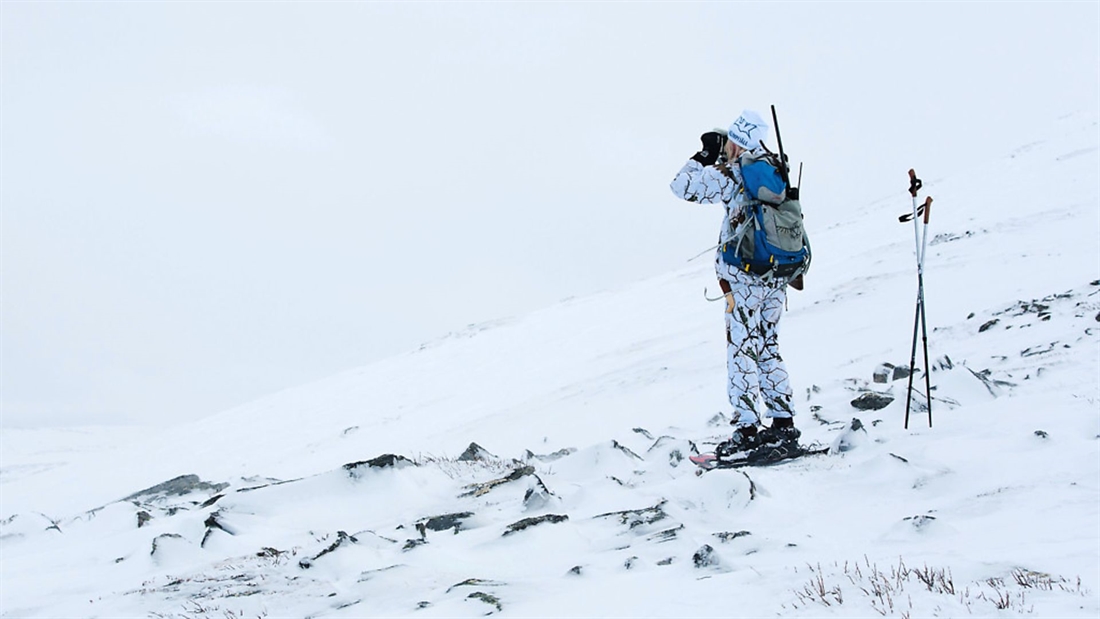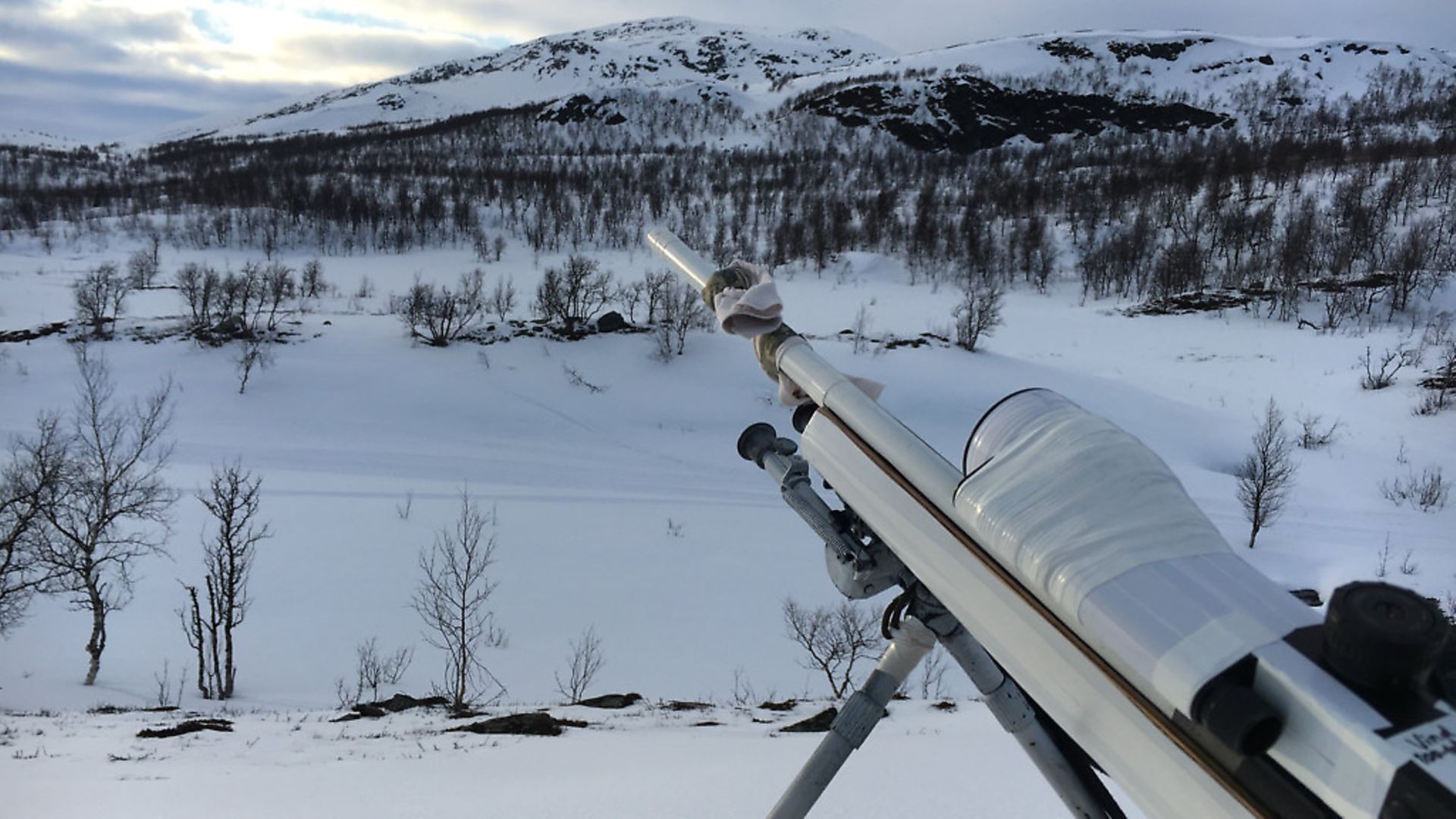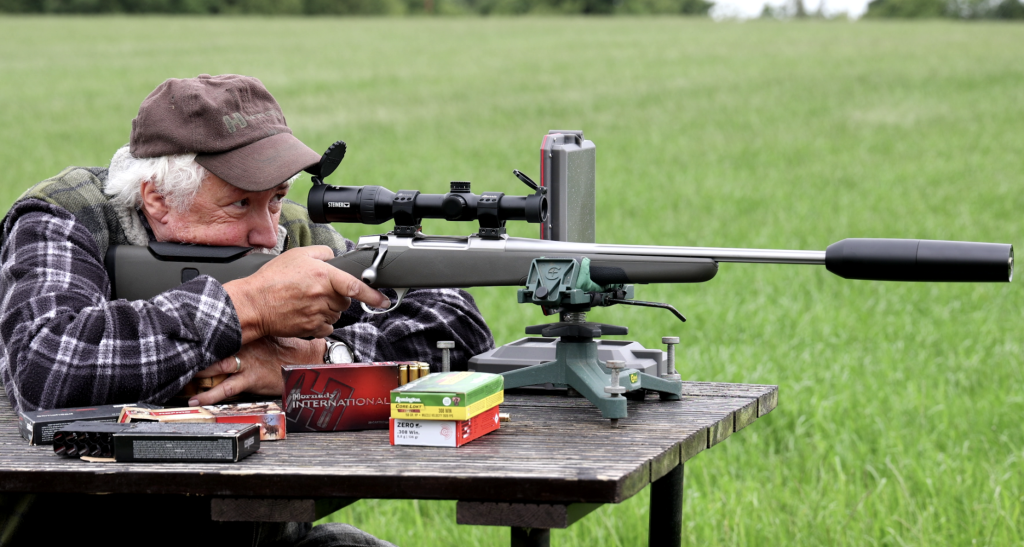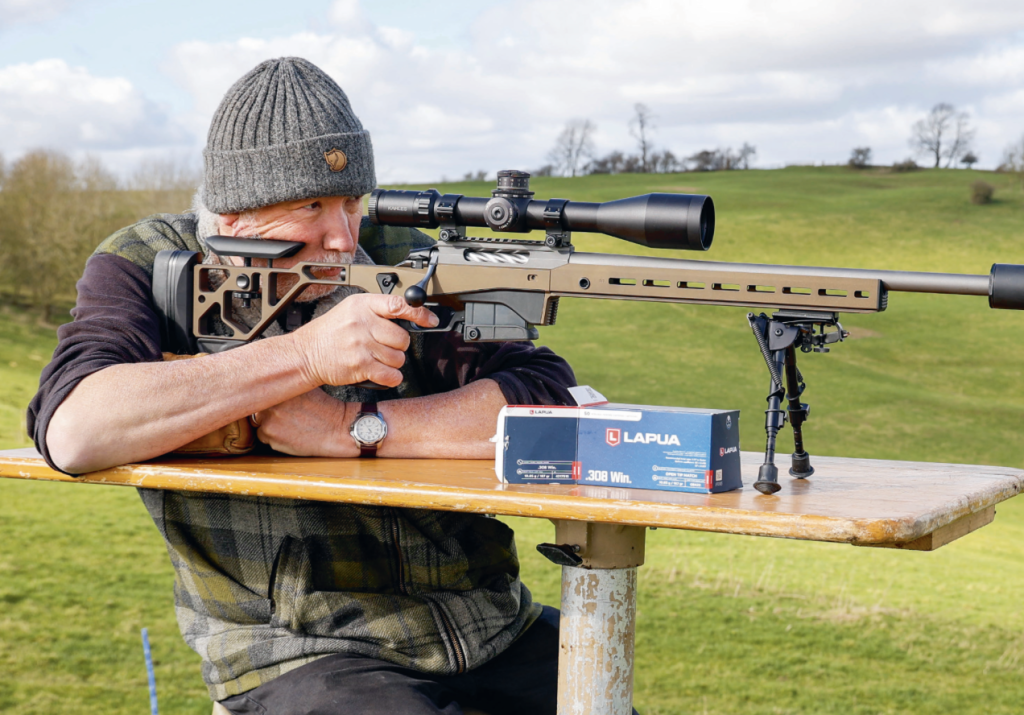A guide to hunting in the arctic (without freezing to death!)

Jonny Crockett provides this comprehensive guide to hunting in the arctic, covering everything from transport (husky or snowmobile?) to dressing for warmth

The Arctic… it looks stunning, beautiful, enchanting; like the best memories of a childhood Christmas. In reality, it is ultimately challenging, unpredictable, unforgiving, and extremely cold! It may look like Narnia, but in this environment Mr Tumnus walks on four legs and, if you’re up for the challenge, you can hunt him. This may not seem obvious, but the biggest problem is the snow, not the cold. We can cope with the cold by dressing appropriately, but the snow makes everything more difficult. Transportation, personal administration and navigation become increasingly problematic. Moving from one place to another requires either specialist equipment or specialist skills, and while they may be easy to learn, they do mean a certain level of dedication.
Getting about
When journeying to an area to hunt in the Arctic you’ll quickly become familiar with a snowmobile, and then from the drop-off point to the start of the hunt you’ll need skis (cross-country skis) or snowshoes. The snowmobile works like a quad bike or an outboard motor: there is a break on the left and a throttle on the right which is operated by the thumb. You push your thumb forwards to go faster and release it to slow. You can get up to 70mph on them, but cross-country you’ll be sticking to 20-30mph usually. There are some things you should get used to doing before starting out. Before you start the snowmobile, lift up the skids on the front; they warm up due to friction, so when you stop they melt the top layer of snow and, when it cools down, the skids can freeze solid to the snow and prevent progress. Always check the fuel before setting off and never leave without a full tank. When handling petrol, you should always wear gloves; you can get cold burns from spilt petrol on your skin.
A toolkit should be taken with you. I’ve had to mend a snowmobile out in the middle of nowhere and it’s not a pleasant experience! Pack an insulated mat so that you’ve got something to lie on when you’re fixing the tracks or skids. When you’re driving around a corner, remember to lean over to counteract the camber. You need to keep the track level as much as you can. One other thing to remember, and this is counterintuitive, is that if you go through the ice, floor it! Snowmobiles can drive on water, but only at speed.
Cross-country skis are fantastic, once you’ve got the hang of them. It’s not like downhill skiing, it’s more like walking or roller skating. Cross-country skiing is far quicker than trudging through snow and it’s more efficient in calories burnt, too. A good skier can cover eight kilometres or more per hour over snow.
Snowshoes work like skis in the way that they spread your weight over a greater area, but unlike skis they don’t run through the snow – you have to lift your feet. They make life easier on thick snow but they are not as quick as skis. They do, however, come into their own on uneven terrain and are ideal for moving around a small area where skis would get tangled up in snowmobiles and trees.
If you are lucky there is a fourth option, which is to travel with huskies; this is something special. If you get the opportunity then you should take it. I can’t think of a better way to travel.
Are you up to the challenge?
When travelling into the cold wastelands of the Arctic – whether in Alaska, Canada or Scandinavia – there are some factors that you should take into account when considering if you’ll be physically up to the task. It’s as simple as this: some people don’t cope well with the cold. Some people get colder more quickly than others. Have a look at the table on p66; it may not be politically correct, but if you are in any of the categories (or combinations of categories) listed there then you may suffer from the cold more quickly. Strangely, fitness does not appear to prevent cold injuries, but those used to cold temperatures do build up a slight ‘immunity’ to the cold. Cold injuries fall into two categories: external and internal. The external injuries are cold nip and frostbite. The internal injury is hypothermia.
Cold nip is when the skin is exposed to extreme cold until the skin and subcutaneous layers are semi-frozen. When you press the affected area it takes on the consistency of a warm candle; you can press the skin and it doesn’t spring back as usual. Frostbite is when the affected area is more deeply frozen, but this can happen at any temperature below 0ºC. The tissue becomes frozen and the blood supply is cut off, and it can lead to amputation. Hypothermia is when your core body temperature dips below 35ºC, and comes in three stages, as show in the table on p63. Hypothermia either comes on slowly, in which case you need to warm the casualty slowly, or it comes on rapidly, meaning you should warm the casualty up quickly. Rapid onset hypothermia is usually as a result of immersion in water. Either way, the casualty should spend time recovering and should not be rushed.
The speed at which people feel cold and become hypothermic can be determined by calorie intake, hydration, hours of sleep, and delayed onset muscle soreness (DOMS). Everyone in the cold should eat sufficient calories, drink plenty of non-diuretic drinks, get their beauty sleep, and take time off after extended periods of exercise. You’ll be working harder so you’ll need to eat more. In cold, dry climates you use up more water than you think by just breathing, and you’ll no doubt suffer from cold onset diuresis (or, the need for a wee) more often than normal due to the cold. Check the colour of your urine – it should be a pale, almost clear colour. You should sleep as much as possible when you’ve got downtime. Make sure you limber up before and after exercise. The stronger your stomach or core muscles, the easier moving on slippery and unpredictable terrain will be, and the better you’ll feel the day after the hunt!
If you do find yourself suffering from hypothermia then you should look back at your food and water intake. Have you had a snack instead of a meal, or a small cup of coffee when a large mug should have been the order of the day? Did you have a broken night’s sleep? If the answer to those questions is ‘yes’ then you need to make up for it. Most people in the Arctic should be drinking five litres of water, taking on 4,000-5,000 calories, and sleeping for eight hours. If you haven’t had that then rest up until you have. The penalty for not doing that could be that you go down with hypothermia a second time, but this time it’ll happen more quickly.
Is your rifle up to the challenge?
When you are hunting wolves in Siberia or Alaska the cold will eat into you in more ways than one. It will impact on your psychological performance, making you feel lethargic and more likely to give up. The cold will also impede your neuromuscular performance. Despite you thinking that you are working well and making good progress through the snow, you’ll probably be going slower than you think.
The Arctic cold can make a big difference to your rifle, too. Now, I love a good laugh, especially if it’s a comedy classic situation. I was out with a friend of mine in Canada, doing a spot of moose hunting, when he made the mistake of forgetting a golden rule – when you wear gloves your finger gets imperceptibly sweaty, and when you take your glove off to take your shot, you come into contact with a metal bolt. The bolt, which has been left in -30ºC, will freeze that sweat instantly. This leads to the hand being stuck to the bolt. While it is not a problem in the short term, you can get frostnip or, at worst, frostbite, if not thawed. A cup of coffee was enough to release my friend on this occasion!
Without the correct oil you may even find that the bolt freezes completely and so can’t be drawn; I’ve known of safety catches freezing on and magazine springs losing their power.
In the Arctic anything can freeze, and usually does! The flight of your round will be different from warmer climes. Cold air is denser than warm air and so your round has to fight through more resistance. This will change the trajectory and range. The scope should be kept at a constant temperature where possible. Going from -30ºC outside to +30ºC in a cabin can cause even the best scopes to mist up.
Staying warm
With your transport sorted, your rifle cold-proofed and your body in good working order, you now need to look at your kit. Heat is taken away from the body in three ways: conductivity, convection and radiation. Conductivity occurs when heat passes through a solid from a hot part to a cold part, and when your clothes are made of material that is a good conductor, you’ll get cold. You should use materials that hold air in the gaps in the fabric, or in amongst the feathers if using down. Avoid clothing with metal zips and poppers. Thermal conductivity of different materials means that some materials will take heat away from your body at different rates (see table, p64).
Convection is the removal of heat by the air around your skin. If your clothing is too loose then air will be heated up and rise through your neck and chest area, meaning the air is replaced with unheated air from outside your clothing; this gives a cooling effect.
Clothing with adjustable draw cords is superb in this environment; when you’re working hard on the way to hunt your moose you can release the draw cords, and when you are in a high seat waiting for your moose to appear from the forest you can pull them tight.
Radiation is the heat emitted from your body. The more skin that is exposed, the more you lose your radiated heat. This means that you should look to cover up as much of your skin as possible. Let’s work from top to bottom…
A good hat is essential. For really cold weather try fur or felt. The hat should be able to cover the ears; after all, ears can get frostbite too. A neck gaiter should be used so that when in a high seat you can pull it up over your nose and keep your face warm, and a pair of sunglasses will protect your eyes too.
Most people who regularly visit the Arctic to hunt favour the layer system – five or six thin layers are better than a couple of thick ones. A couple of base layers, a couple of mid layers and an outer layer will trap more air than just a base layer and a jacket. Personally, I choose wool or bamboo as my inner layers, followed by a fleece mid layer and a good down jacket on the top.
Gloves are so important. A sturdy pair of down gloves (or even warmer, mittens) over a thin pair will help make a trip to the polar regions successful.
Salopettes are my trouser of choice. Ensure they have a bit of padding on the knees so that when you kneel down you don’t get wet knees. A decent pair of leggings will keep you warm when worn in conjunction with the salopettes.
For feet, you need the warmest boots that you can afford. I wear Sorel Glacier boots which are rated to -70ºC and so are a go-anywhere, do-anything boot. Put on some decent socks and you’re made!
Jonny’s Top Ten Tips for Arctic hunts
1. When standing out in the snow, stand on some branches, a tree stump or a rubber mat.
2. Attach a different coloured carabiner to each glove so that when you take them off you can clip them together and put one glove inside your jacket and one outside your jacket. It keeps them off the ground and stops them from freezing.
3. Keep all electronic equipment inside your jacket to maintain the batteries.
4. Use a plastic or wooden mug. There’s nothing more embarrassing that having a cup stuck to your lips.
5. Keep talking to people. Don’t be afraid to tell someone that you’ve got a problem or that you’re cold.
6. If you’re already cold then it’s too late – deal with problems before they arise.
7. Never, never, ever put anything down on the snow. Things sink through the top layer and become totally invisible and impossible to find.
8. Animal tracks are very easy to find and follow, but tracks in the snow look as though they are made by bigger animals. Don’t follow moose prints only to discover they were made by a fox.
9. Cold air is denser so sound travels more quickly. Silence is essential to successful Arctic hunting.
10. Even if you can’t find your quarry, enjoy the scenery.
Related Articles
Get the latest news delivered direct to your door
Subscribe to Rifle Shooter
Elevate your shooting experience with a subscription to Rifle Shooter magazine, the UK’s premier publication for dedicated rifle enthusiasts.
Whether you’re a seasoned shot or new to the sport, Rifle Shooter delivers expert insights, in-depth gear reviews and invaluable techniques to enhance your skills. Each bi-monthly issue brings you the latest in deer stalking, foxing, long-range shooting, and international hunting adventures, all crafted by leading experts from Britain and around the world.
By subscribing, you’ll not only save on the retail price but also gain exclusive access to £2 million Public Liability Insurance, covering recreational and professional use of shotguns, rifles, and airguns.
Don’t miss out on the opportunity to join a community of passionate shooters and stay at the forefront of rifle technology and technique.




